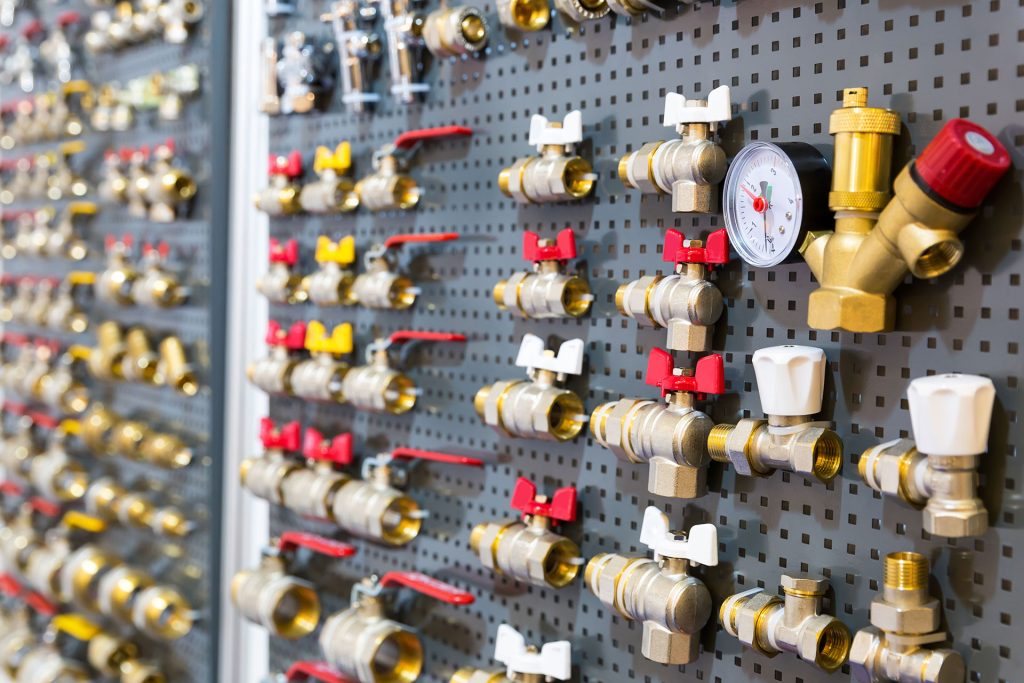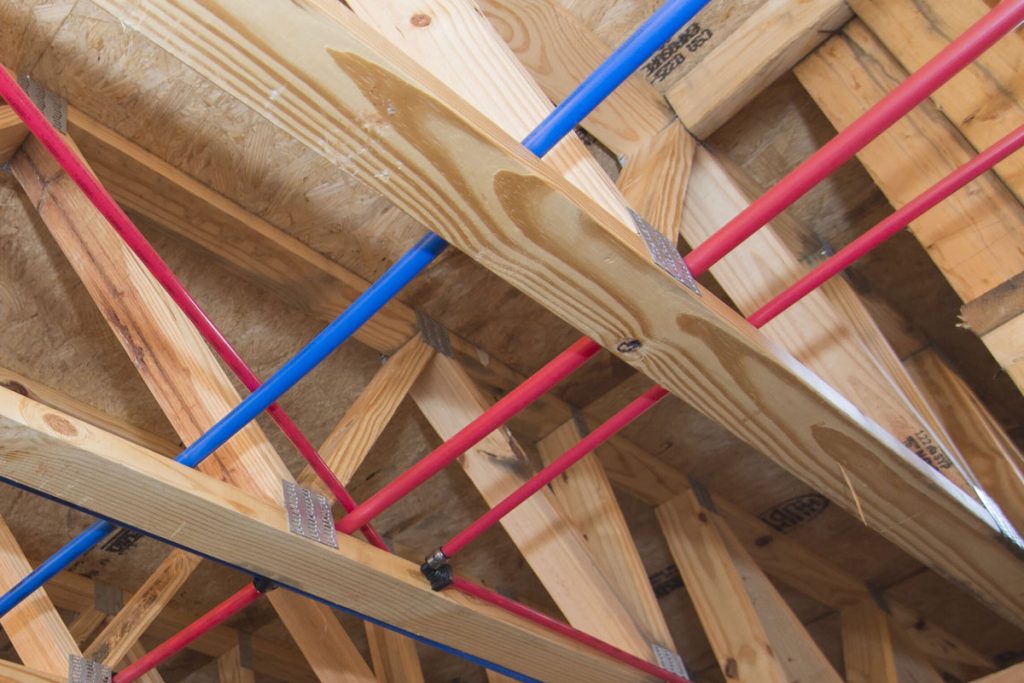Water valves perform a wide range of functions for plumbing systems, and selecting the right plumbing valve is crucial. When you want to control water the way you want, it’s important to understand different types of plumbing valves and how they work. Each type of valve has its own set of functions and benefits, as well as applications for which it’s best suited.
A variety of valves are used in residential and commercial piping systems to join pipes and regulate the flow of water. Plumbing valves might be hard to identify at first, but with our simple guide on different water valve types, you can have a better understanding of their functions and designs. Discover a wide selection of different types of plumbing valves and other plumbing supplies at PlumbingSell.
Table of Contents
Ball Valves
Among the many plumbing valve types, ball valves are probably the most widely used valve design for their reliability, simplicity and durability. A ball valve controls water flow using a pivoting ball with a hole through the center. When the handle is turned, the hole aligns with the pipe to allow flow, while when it rotates perpendicular, it will block the flow completely. This quarter-turn mechanism design makes ball valves extremely quick and easy to operate, especially in emergencies where quick shutting off of water is required.
Ball valves are well known for their convenience, low maintenance and cost-effective operation. With a high-quality EFIELD ball valve, you can open and close it a hundred times a day with little impact on the valve mechanism itself.
This kind of plumbing valve comes in a very wide range of materials, types and sizes, which makes them ideal for almost any application that requires quick shut off. Ball valves are also capable of handling high-pressure and high-volume water flow, making them one of the most versatile options among plumbing valves and fittings; if you are exploring the types of water shut-off valves for your project, the ball valve should be considered as a top choice.
Gate Valves
A gate valve is one of the most traditional types of water shut-off valves. They are very common in older water systems and can accommodate high-pressure levels without causing water hammers. Gate valves have a flat disc-like mechanism to start or stop water flow completely. When the internal gate rises, the water flow can pass through, and when it is lowered, the water flow will be shut off.
Gate valves are perfect for plumbing systems with water hammer problems. However, their sizes are larger than other flow control valves and are relatively slow to open and close. It is also noticeable that gate valves are more prone to corrosion and failure over time.
Suitable For: Residential plumbing systems, water shut-off valves, isolation valves and hot water tank valves with enough space for plumbing valve installation.
Stop Valves
A stop valve is one of the most important types of plumbing valves used to control the flow of water to individual fixtures or appliances such as toilets, sinks or washing machines. Unlike a gate valve, which is designed to shut on or off water flow as needed fully, a stop valve offers better control of water flow. You can partially or fully shut off the water flow as needed.
Stop valves mainly come in two types: angle stop valves and straight stop valves. An angle stop valve is designed with a 90-degree turn, making it ideal when the water supply pipe comes out of the wall and needs to change direction to reach the fixture. It is commonly used under sinks and behind toilets. In contrast, a straight stop valve is used when the water line comes straight out of the floor or continues straight to the fixture without needing a directional change.
Both types of stop valves are crucial in plumbing valves and fittings, providing easy access for shutting off the water supply quickly when needed. They are also available in various sizes that cover most of the residential plumbing valve requirements.
Check Valves
A plumbing check valve is another crucial component designed to allow water to flow in only one direction. They can automatically prevent any backward movement of water within the plumbing system. Check valves are commonly used in places where contaminated water and sewage from drain lines need to be prevented from flowing backward.
Check valves are particularly important in piping systems that require consistent water pressure and flow direction, such as portable water applications, sprinkler systems, pumps and safety applications. Also, like gate valves, check valves can prevent water hammers from damaging sensitive upstream components. Whether installed in residential, commercial or industrial applications, plumbing valves and fittings that include a properly selected check valve ensure a safer and more efficient system.
Sillcocks
A sillcock is an outdoor faucet, which is a type of plumbing valve installed on the exterior wall of a building. It provides easy access to water outdoors for usages such as watering the garden or washing cars. Standard sillcocks are simple in design yet able to prevent water from freezing within the pipe. Like other types of plumbing valves and fittings, sillcocks also come in various types, sizes and materials; one of the most common types is the frost-free sillcocks.
If you live in a colder climate, installing a frost-proof sillcock is essential. This kind of sillcock has a longer valve stem that extends inside the wall with a valve located inside the building, which helps keep water away from freezing and prevents pipes from bursting during cold weather.
Whether standard or frost-proof, sillcocks are essential components among plumbing valves and fittings, especially for residential projects with outdoor water usage requirements. With proper sillcocks installed, you can have convenient outdoor water access while protecting your plumbing system year-round.
Conclusion
Choosing the right plumbing valves is critical for an efficient, safe and durable plumbing system. From ball valves to sillcocks, each type of valve serves a unique purpose in regulating, isolating or directing water flow. Understanding the different types of plumbing valves and their uses helps you pick the proper ones for your different projects.
Whether you are choosing valves for a new project or upgrading existing plumbing valves and fittings, it’s important to match the valve type to your specific needs. Ready to start your project? Explore a wide selection of high-quality plumbing valves, fittings, and other supplies at PlumbingSell — your trusted source for all your plumbing needs.



